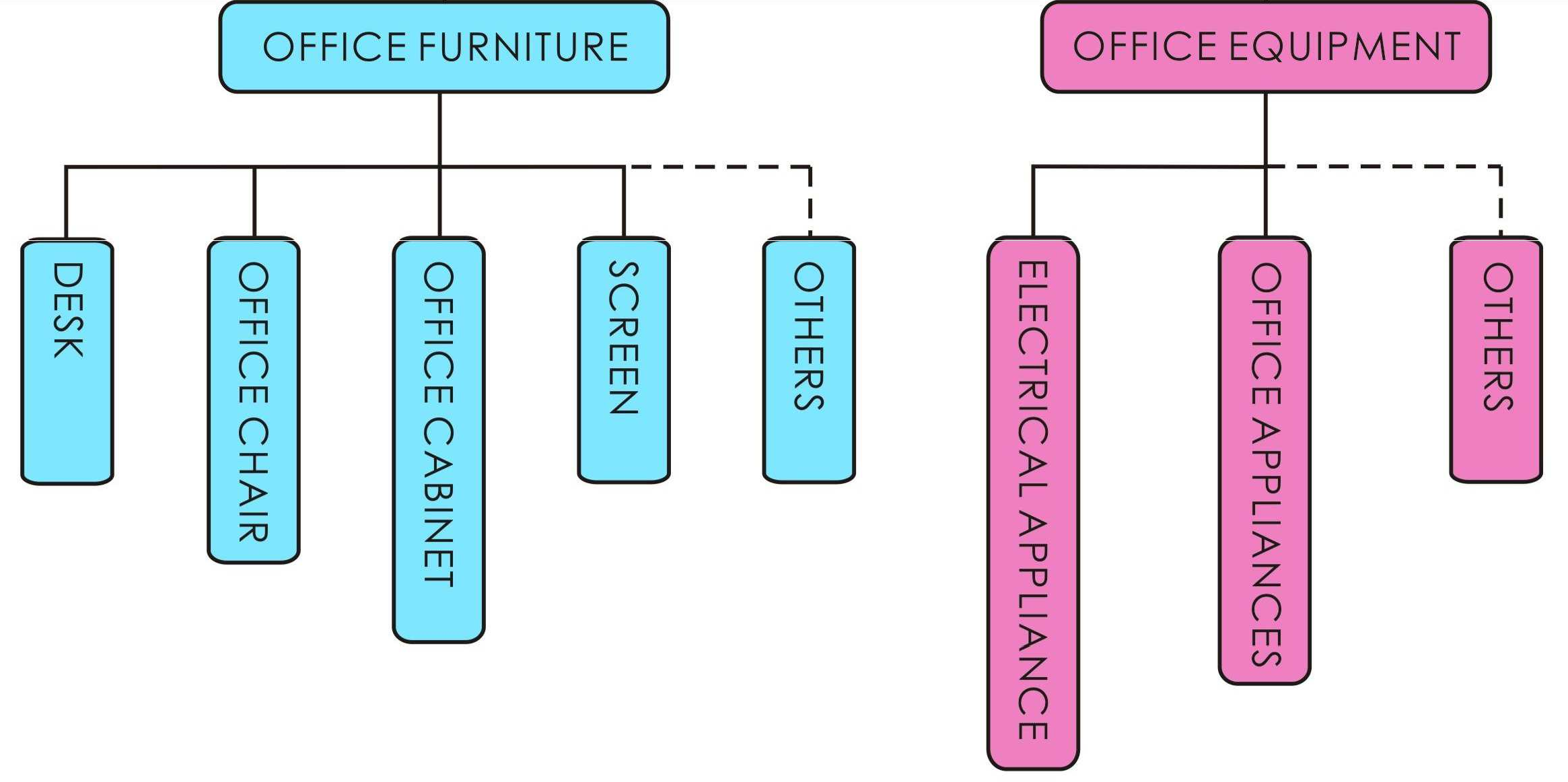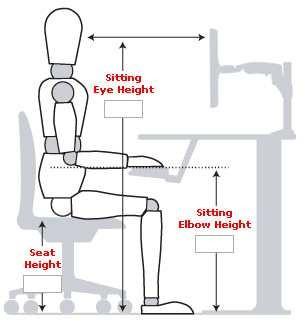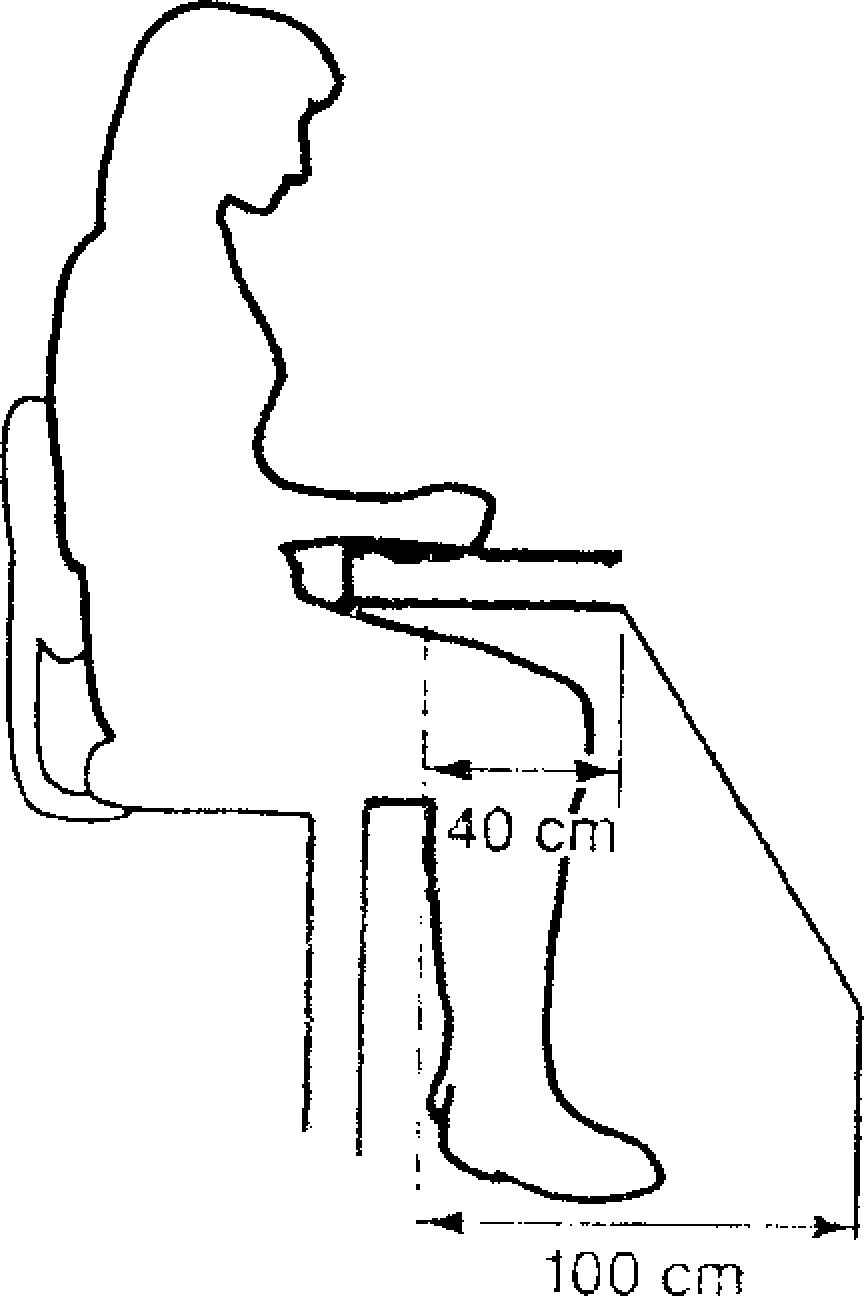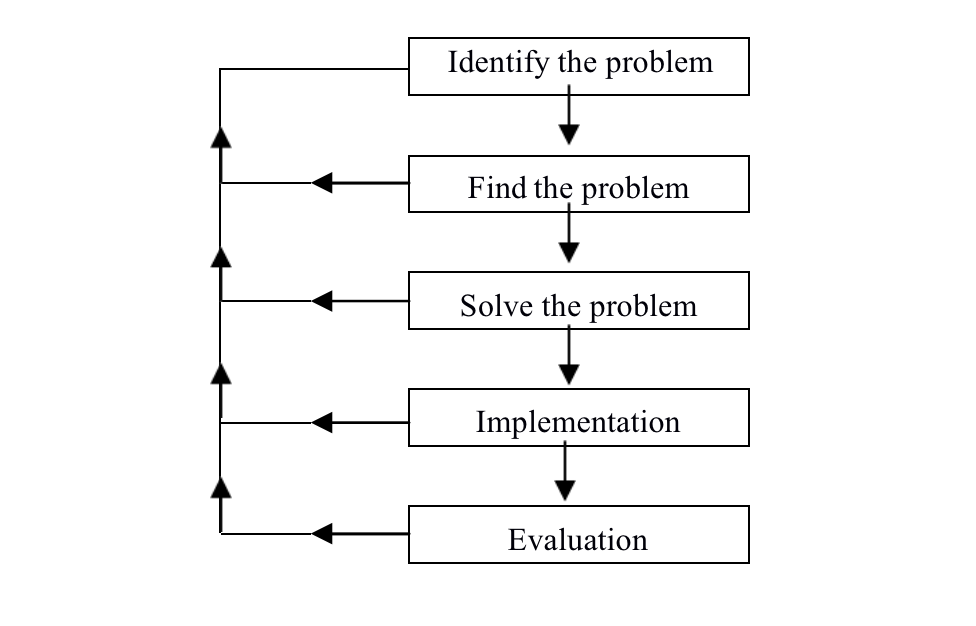By Pompey | 23 January 2022 | 0 Comments
The Utilization of Ergonomics in Modern Office Furniture Design in 2022
The Overview of Ergonomics Design in Modern Office Furniture
Office design is reasonable or not, it will have a direct impact on efficiency. The office furniture is an important part of the environment, which play a decisive role on the quality of the office environment. Eight hours a day in office is likely not only to cause physical fatigue and disease, but also to the negative psychological effects. Thus, modern office furniture must be designed to reflect the “human-centered” design values, focus on improving working conditions and office efficiency, the applications of ergonomics knowledge study human and office furniture as a whole, to create not only be able to ensure the environment fit for the characteristics of the physical body, to make people working in scientific, healthy and reasonable way, and appreciated the fun of work in the efficient way.Ergonomic become recognized in the field during World War II, first applied the technology and human sciences to system in a coordinated approach, the science and physiologists, psychologists, anthropologists, doctors, scientists and engineers get together to solve complex military equipment operation problem. This emergence of interdisciplinary approach led to the cooperation in the industrial field after the World War II, and gradual rise in the United States and Europe, British first established Association of ergonomics in 1949, and adopted the term of “Ergonomics”. International Ergonomics Association (IEA) was established in 1961, the national academic organizations played a major role to promote the development of ergonomics, so far there are about 150,000 active members in 40 countries or regions. China was formally established the Chinese Ergonomics Society (CES) in 1989, which become a milestone in the development of human engineering.
International Ergonomics Association (IEA) defined the human ergonomics as follows: It is a scientific discipline, attention to the interaction between people and other elements in system, applied the theories, principles, data and methods to the design, to optimize human and overall system performance. Ergonomic combined physics, physiology, anatomy, psychology, technology, science, control theory, information theory, systems theory and other fields and disciplines, which is a practical, highly cross-disciplinary of applications. The direction and characteristic of Ergonomic research is: to study the “human- object – environment” system as a unified whole, in order to create the machinery equipment and operating environment suitable for people, coordinated the “human- object – environment” system, to gain the highest overall system performance. For modern office furniture design, its main task is take man as the principal thing, the carrier of design is office furniture, create convenient, comfortable and safe material conditions for people’s work and life, and on this basis, to meet people’s spiritual needs. Office furniture is the main building materials in office space, not only effective organized interior space, divided or isolated the office area and channel, but also effected the form, colors, materials, style, configuration, scale and number of furniture and interior space, which is the important elements of interior design. Therefore, the design of modern office furniture should not be limited to the concept of the traditional furniture, must put the “human factor” as an important factor, emphasis on “human- oriented” and consider systematic the organic problem of the office furniture and its scale.

Fig.1 Modern office furniture system

Fig.2 Guidelines for the office chair

Fig.3. Required legroom for sitting
| The research content and application range of Ergonomic are extremely wide, its research results used in office furniture design can provide the following 4 important scientific basis for the system design of human, furniture and office space: 1, Provide human scale parameters for office furniture design. |
3, Provide design guidelines for the “environmental factors” of design.
4, Provide a theoretical basis for the office furniture system designed.
The Analysis of Ergonomic Design Elements in Modern Office Furniture
With the development and improvement of the modern office equipment, it is very important for the modern office furniture design to secure scientific, rational and efficient work pattern. Besides the easy to use, strong, beautiful form, color and personality, the complete and effective office furniture systems must be comfortable, functional, reasonable and helps to eliminate fatigue, so that people get the most satisfy in heavy work (see fig.1).
Ergonomic design elements of office chair. Most office workers are seated work. The natural posture is sitting position, sitting can reduce the body’s energy and fatigue, keep the body in a stable posture is more conducive to work. However, the posture is also flawed, a lot of work (such as writing or processing) operations require visual attention to both hands, forcing the head and torso bent forward, neck and back strain by oppression in a long time. Most of ergonomic seats in the market, the seat and backrest height are adjustable. The main components of office chair include seat surface, backrest and support frame, the main function of some backrest can ensures comfort, stability and accurate position. The auxiliary component of chair is the seat rails, which can support the weight of part of the arms and torso, supporting standing.
Table 1 References on office chair
| Parameter | Value |
| Height of seat | 36 ~ 48 cm |
| width of seat | 37 ~ 42 cm |
| Depth of seat | 36 ~ 39 cm |
| Length of back | 32 ~ 34 cm |
| Width of back | 20 ~ 30 cm |
| thickness of back | 3.5 ~ 5.0 cm |
| Height of back | 16.5 ~ 21 cm |
| Circle Radius of back | 40 ~ 70 cm |
| Overthrow radius | 19.5 cm |
| Sit Angle | 0°~ 5° |
| Seatback angle | 95°~115° |
Table 2 Guidelines for the work height
| Office pattern | The height of work |
| use of eyes:frequent | Below eyes 10- 30cm |
| use of hand/arm :infrequent | |
| use of eyes:frequent | Above the elbow 0- 15cm |
| use of hand/arm:frequent | |
| use of eyes::infrequent | Below the elbow 0- 30cm |
| use of hand/arm:frequent |
Firstly, the size of various parts of office chairs should to be appropriate (Table 1). Secondly, office chair seat height and backrest height must be adjusted. The adjustment range of seat height is “lower leg plus foot high”, that is between 36 ~ 48cm, to ensure that both foot and thigh be supported, there is no pressure behind the knee. The adjustment range of backrest height is the infinitely variable control between 16.5 ~ 21cm. Thirdly, the seat surface and backrest of office chair should be designed to meet the needs of the user comfort. The use of low and high back should be distinct in design. The structure of back should have some flexibility and sufficient rigidity, the shape of the lower back should be raised to protect the body back-arc curve, the seat back angle should not exceed 115 ° in the case of chair fixed. Armrest can be selected according to the need of work, shorter length so that make the seat close to the desk. Seat should be rotated to reduce the trunk torsion fatigue. In addition, in the need of short distance moving, the controllable trundle can increase the convenience of work. Fourthly, the structure of all part of the office chairs should ensure the safety of users. Part of the texture and structure of adjustable seat must be easy to adjust, and to ensure that the structure adjusted in a good position should not change or loose in the using course. The exposed component parts of chair can’t have sharp corners and sharp edges of easy to hurt, all parts of the structure can’t exist the extruded and cut part which may cause some hurt to people. Finally, the structure and decorative materials of office chairs should be durable, non-toxic and flame retardant. The surface covered seat surface, backrest and armrest should use the soft, non-slip, sweat, air permeability and non-conductive material.
Ergonomic Design Elements of Desk. The main function of desk is to provide reading, writing and other office-related matters, particularly in the information age, computer has become the center and the main body of desk. Most office workers face a long time computer work, prone to muscle, neck, back and wrist pain and other diseases, so the desk must be designed to meet the normal body posture and with a reasonable shape and size.
Working face height is one of the elements must be choice. Working face is too low, then the back will be over flexion; if too high, you must raise the shoulders more than its relaxed position, which causing the shoulder and neck discomfort. Therefore, the height of the desk should be in search of optimum size to require for both the arm and the height of the head and trunk.
Firstly, low-desktop is apt to lift, stretch and force the arm easily. Secondly, the high desktop can reduce body bent and broad visual perspective. The height of the desktop depends on the nature of the work, personal preferences, seat height, thigh thickness of workers and desk surface thickness. For writing or work surface, the height is the normal operating position, low surface for heavy load is in order to application of arm force easily, and to avoid hand loading, for fine work, the higher desk surface makes the eyes close to the object of work easy to observe (see table 2).
From point of view of the ergonomic, office desk design needs to consider the following aspects: Firstly, because the body size difference, the height of desks, chairs and foot must match each other, and give the range of adjustment. Desk adjustment means included the vertical height adjustment, horizontal adjustment and tilt adjustment. Secondly, in the case of desk height fixed can add pedal. The height of foot should also be able to adjust and the surface is slightly tilted. Thirdly, the office work is usually carried out at the horizontal level of the surface. Studies have found that moderate tilt of the desktop is more suitable for horizontal operation. When the angle of the tilt table is between 12 ° -24 °, the posture of people is natural, the movement range of trunk is small, compared with the horizontal level of the desktop, the feeling of fatigue and discomfort reduced. Generally the tilt angle of writing desktop is about 15 °, the tilt angle of reading desktop should be less than 45 °as well. Finally, the lower space of desk for the legs and feet should be sufficient to place a width of at least 60cm, at least the depth for knee is 40cm, the height from foot to thigh is 100cm. the space for legs need fully extended for the long hours of work, therefore, the depth for foot should be at least 100cm (see figure 3).
Table 3 Guidelines for reaches
| The first area | The operate posture must to squat and to tilt the body below the knee, the range of height is about 0-30cm. |
| The second area | The operate posture must to bend over or squat, the range of height is about 30-60cm. |
| The third area | The operate posture is able to free activity with standing, the range of height is about 60-125cm. |
| The forth area | The operate posture can lift the hand over to the shoulder, the range of height is about 75-155cm. |
| The fifth area | The operate posture must to lift the hand up to the top of head, he range of height is about 155-190cm. |
Ergonomic Design Elements of Office Cabinet. Cabinet in the office furniture system is mainly responsible for office documents and office items for effective storage. It not only refers to the general sense of the storage function, but also considered the ease of use to ensure the quality and efficiency of office work. So the office cabinet furniture category also includes management functions. Office cabinet furniture according to their functional class can be divided into cabinets, file cabinets, wall cabinets and wall cabinets and other types. Office cabinet height is usually based on point of view, the height of office cabinet often depended on the distance between the vision point and work surface and the job content (see table 3). Cabinets usually place close the wall because the elevation of the wall is large, and sometimes the cabinets used to separate space.
Ergonomic Design Elements of Screen Partition. The indoor office screen partition system played the role of sound insulation and block the sight line, and also can divide work units and channels, the problems faced by designers is to determine the optimal height of these partitions. In order to select the appropriate height of partitions, the key of the body size is the eye height when person standing and the eye height when people seated. If the partition is to block people’s sight, then the person’s vision is also very important.
Under normal circumstances, to adopt three kinds of partition, lower partition below 120cm ensure privacy when sitting, which still does not block the view from the top partition, the partition height of 152cm, providing greater visual privacy, the third kind of partition is more than about 203cm, maximum privacy, but this approach may lead to the pressure. High partition is very useful in defining the partition, but preferably with a lower partition, especially in the area need for visual contact even more so. Some systems also use the partition as high as the ceiling, and sometimes this partition also has highly symbolic meaning – indicate the position, the higher the qualifications of staff is the higher the partition is, and according to the rank of staff to reduce the height of partition.
The Utilization of Ergonomic Method in Modern Office Furniture Design
The research of ergonomics main used the methods of human body science and related disciplines, combined with the methods of systems engineering, control theory and statistical methods, which providing a viable design guidelines and methods for office furniture system design can be applied to create the best working conditions for the human safety, health and welfare, at the same time taking into account technical and economic effects. Modern office furniture ergonomic design is usually developed through the following independent and continuous steps (see fig.4).
Identify the Problem. Identify the problems to plan by detailed investigation. The design goals should first be objective, clear and detailed discussed. Determine the composition of the design team, which includes the customer (such as company manager), design groups, experts and users, etc., division of labor should be clear in the team.
Find the Problem. Collect the required diversity data for office furniture design. Analyze the relevant ergonomic data of security, health, comfort and performance from the past successful cases and the records of the complaints, ideas and aspirations. Commonly used methods of technical research and analysis are included:
Measurement method. It is the actual operating parameters measurement method for the human body or system parameters, working environment with the aid of instrument and equipment.
Experimentation. This method is generally operated in the laboratory, but also can be in the office scene. Such as in order to get the body pressure distribution data for furniture the experiment is needed operate in the laboratory. If to get the color environment effects on psychological, physiological and work efficiency, the experiment is often needed operate in the scene of working for its long time and number of observations.

Fig.4 The successive stages of a design
Observation. It is used to analyze the working state of human and machine, such as office movement and process for office furniture system study.
Simulation and Model Test Method. This method can get the actual data more in line with the reality by realistic tests on the office furniture system.
Solve the Problem. Determine the program and improved. In the design process, it is needed to set out a list of intentions. Ergonomic reference books, software and other tools (such as templates and models) will be of great effect on the formation of the design concept. The furniture prototypes (samples) can be improved by user experience. In addition, the cleaning and maintenance staffs are also important target group.
The Implementation for the Selected Program. It is included the aspects of installation, testing, allowing users to understand and accept the new product or system and so on. Choose the real site to for the office furniture and system testing as possible.
The Objective Analysis and Evaluation for the Results. As time goes on, even the most sophisticated design will be difficult to achieve the optimal level, usually in small details still has room for adjustment, be attention to the collection of data for comparison after change. While there are many practical problems to be solved, but the systematic evaluation is still needed to test whether the results meet the original goal after the product launch. However, be careful not to rush to assess after the operation, since the use of the initial problems are inevitable, especially the user’s attitude to accept new things will lead to inaccurate assessment on new products. After a period of running, it will be more harmonious getting along with new things than the old things.
Conclusion
The relationship between users and the office environment determines the degree of comfort, care for staff and efficiency in office. In the work space design, the most important is office furniture and related designs. People usually work in their own space to spend more than half of working time, then how to ensure that office furniture adapted to the human body needs becomes very important. Therefore, it is also stressed the importance of the relationship between the entire office furniture systems.
In short, modern office furniture design should follow the flexibility, economy, pleasant principle, the most critical is the human scale basis, depending on the characteristics and the needs of professional to design, combine and flexible arrange the common basic functions and special features of office furniture, make the office system more flexible and diverse, saving space and resources, increase productivity, to achieve optimal functional integration of office furniture system, give full play to the actual effect at the same time without losing real comfortable charm.
Leave a Reply
Your email address will not be published.Required fields are marked. *
CATEGORIES
POPULAR BLOG
- How Much Does An Office Chair Cost in 2022
- Office Chair Buying Guide: How to Find the Perfect Office Chair for Your Office?
- How to Import Office Furnitures from China: The Complete Guide
- 15 Most Popular Ergonomic Office Chairs on the Market Under $500 for Your Office in 2022
- The Ultimate Guide of Top 10 Chinese Office Furniture Manufacturers in 2022